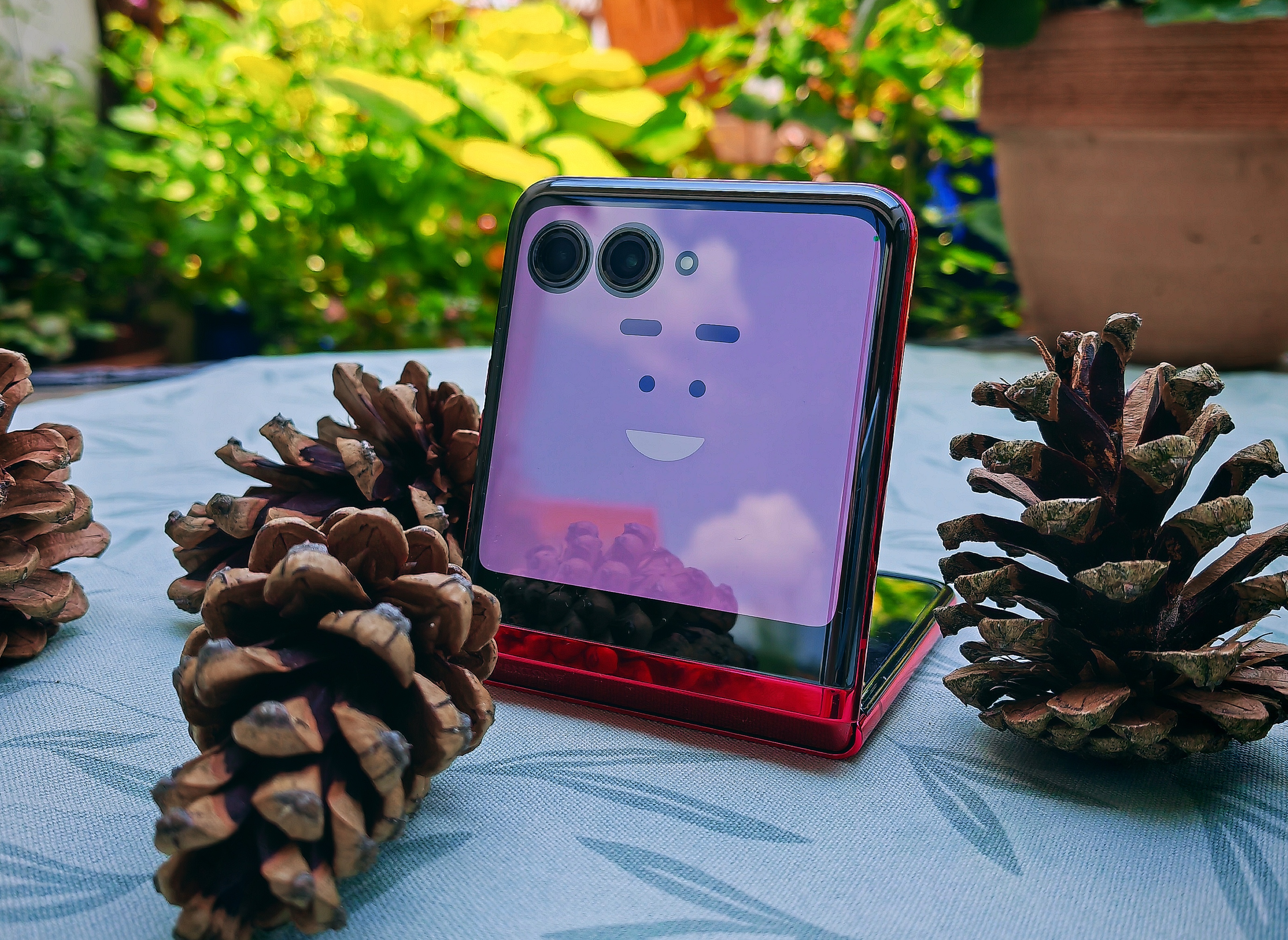
Design-wise, Motorola have set out to make sure that the cover screen isn’t ruined by having two differently sized cameras placed on top of it. So instead, two lenses which are the exact same size occupy the top left portion of the device: One is a 12-megapixel main camera with optical image stabilization, the other is 13-megapixel ultra-wide angle lens which can also be used as a macro camera.
The main camera takes nice, saturated pictures – although with a relatively cool white balance. When it comes to smaller details, the iPhone 14 and Honor Magic4 Pro‘s cameras offer just a little more. Images taken on the Apple smartphone tend to look a little more vivid, as they have stronger levels of contrast.
Due to a missing periscope zoom, the Razr+ remains a little less flexible in its photographing abilities. In low light conditions, darker areas could do with being lightened a little more – but all-in-all, the photos are quite sharp.
The wide-angle lens generally does its job well and smaller, individual details remain clear.
Videos can be recorded in a maximum of 4K and at 30 fps – here, quite a few other high-end phones have already started offering more, including video recording in 8K and at 60 fps.
Thanks to its outer screen, you can choose which camera you would like to take selfies on. There is also a generous 32-megapixel punch hole camera situated on the inside display – but it unfortunately isn’t all too light sensitive. Generally on these types of cameras, 4 pixels are combined using pixel binning, which results in 8-megapixel images with better lighting levels.
Selfies taken in this way barely look any less high-quality than the ones taken on the phone’s main camera.
Source link
 notebook.co.id informasi dan review notebook laptop tablet dan pc
notebook.co.id informasi dan review notebook laptop tablet dan pc